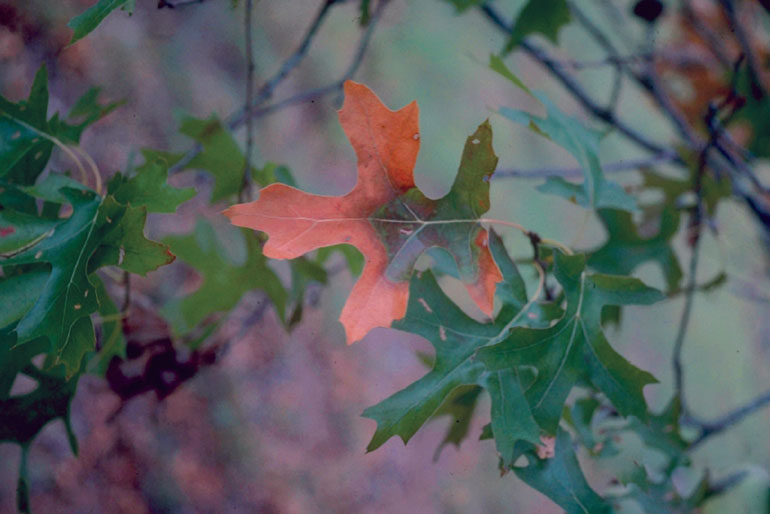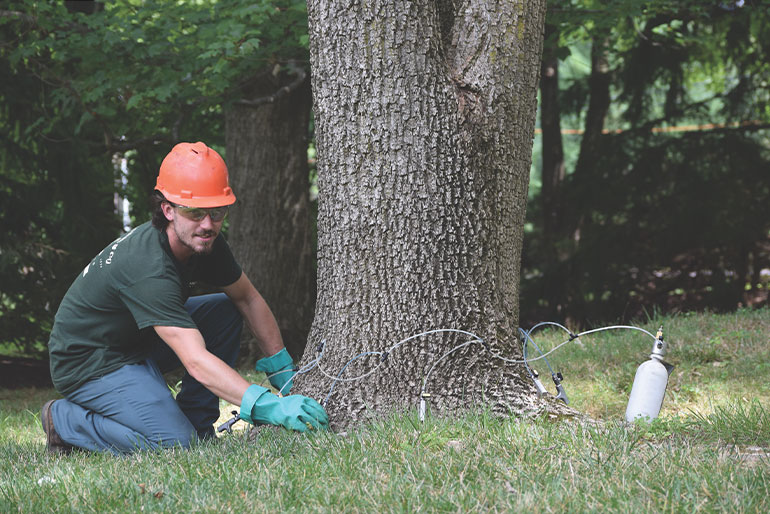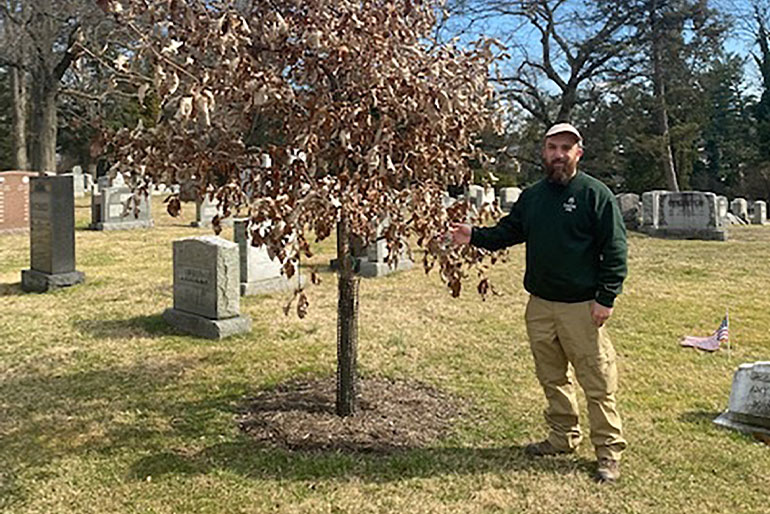

Oak Wilt
Oak wilt has always been one of those diseases that we were happy to not have to deal with. We were aware of the big oak wilt problem in the Midwest, the Southwest and even Western Pennsylvania, but we clung tentatively to the fact that it had never been found east of the Susquehanna River. Those days are over. Oak wilt is now known to be in Montgomery, Delaware and Philadelphia counties. This isn’t the end for oak trees, but it will change how we manage oaks.
It’s important for everyone to know what the signs of possible oak wilt infection look like.
Oak wilt is a vascular wilt disease caused by a fungus. In the spring, the fungus gets vectored to host trees by bark beetles and through root grafts from infected trees. After infection, leaves turn brown at the margins; they fall from the tree in June. Infected trees in the red oak family can die in one growing season. Infected white oaks can be saved and managed with fungicide injections. Additionally, roots around infected trees should be severed to prevent spreading the disease from root grafts. Oaks should not be pruned during May and June.
This is a disease that we need to take seriously, but we can rely on decades of experience from arborists in other parts of the country to help develop good plans to maintain our clients’ oak trees.
Beech Leaf Disease
Beech leaf disease (BLD) is very new problem that affects all species of beech. It was first described in Ohio in 2012; it has since moved east and was identified in Montgomery and Philadelphia counties in 2022. Since BLD is so new, researchers are still learning about it and are only just beginning to develop treatment strategies. We will keep our clients posted as we learn more.
BLD appears to be caused by a nematode, or roundworm. The early symptoms of the disease are dark bands between the leaf veins. The leaves eventually crinkle up and turn brown. Arborists in states with severe cases report that the lower branches and understory trees are affected first; the disease progresses up the canopy, eventually killing large beech trees in as little as five years.
Last season, researchers saw some promise in a couple of treatment strategies, so hopefully we have some tools at our disposal before this problem becomes widespread in our area.
As always, we will stay up to date with these new threats to our trees and shrubs, as well as with other issues that we continue to manage. If you have any questions or concerns, please reach out to us and set up a time for an arborist to meet with you and assess your landscape.

English ivy, Hedera helix is an evergreen groundcover and climbing vine hardy in the Philadelphia area. Long utilized as a ground cover, the...

The Arboretum at Laurel Hill is collaborating with Cornell University to grow hybrid oak trees at their cemetery in Bala Cynwyd.
The project was...

Oak Wilt
Oak wilt has always been one of those diseases that we were happy to not have to deal with. We were aware...